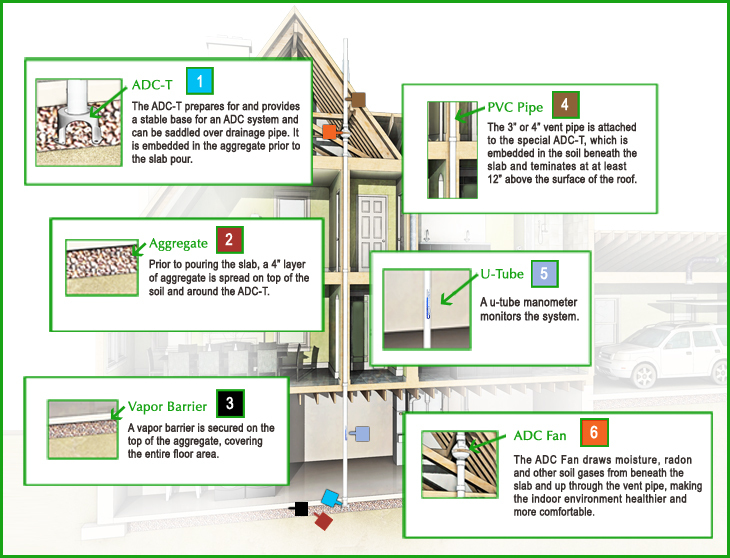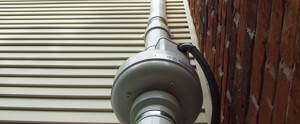Active Dampness Control & Radon Reduction for New Construction
Effective June 1, 2013 the Illinois Radon Resistant Construction Act went into effect stating that all new construction of single-family homes or dwellings containing 2 or fewer apartments, condominiums, or town houses must have a passive radon pipe installed. We work with builders to install and activate these systems.
What is RRNC?
RRNC (Radon Resistant New Construction) refers to the process of preparing a new home for the installation of a radon system during the early construction phase and is identical to the installation of an Active Dampness Control System, rough-in.
Does RRNC with a Passive System Reduce Radon?
A passive system or RRNC may provide some reduction in radon levels based on the natural convection of heat rising up through the home, (stack effect), but an active system will greatly reduce radon levels in nearly every new home. Both terms give the impression that a home is safe from radon, however a home with RRNC or a passive radon system is not guaranteed to resist radon nor is it guaranteed to be radon free.
These two simple and relatively inexpensive additional steps will make a passive or RRNC system active:
1. Add a radon fan.
2. Test the radon level.
Active Dampness Control (ADC) Systems , (aka radon mitigation systems) are designed and engineered to reduce indoor air health risks by preventing radon, water vapor and other soil gases from entering the home.
Active Dampness Control (ADC) System™
An active ADC System quietly and unobtrusively provides better indoor air quality and a healthier living with no homeowner maintenance. Most systems use about the same amount of energy as a low wattage light bulb.
Each home is retested for radon concentration immediately following occupancy. Homeowners are provided with graphical representation of hourly radon concentration test results, performance guaranty and transferable warranty.
Click Image for Large Diagram
Images courtesy of Radon Away
An ADC System helps to protect home occupants by improving air quality for a healthier, more comfortable indoor environment:
- Reducing moisture, allergens, summer time humidity, radon and other harmful soil gases
- Preventing as much as 1,000 gallons of water vapor from entering the home annually
- Reducing moisture-related health hazards such as mold and mildew and insect infestation
Eliminate some of the toxins and allergens that can cause:
- Lung cancer
- Asthma
- Severe allergic reactions
- Headaches
- Sneezing
- And a long list of additional mild or serious allergen-induced symptoms
Active Radon Systems / RRNC create a healthier home environment by reducing the likelihood of moisture-related new-home problems such as warping wood, odors and mold or mildew.





